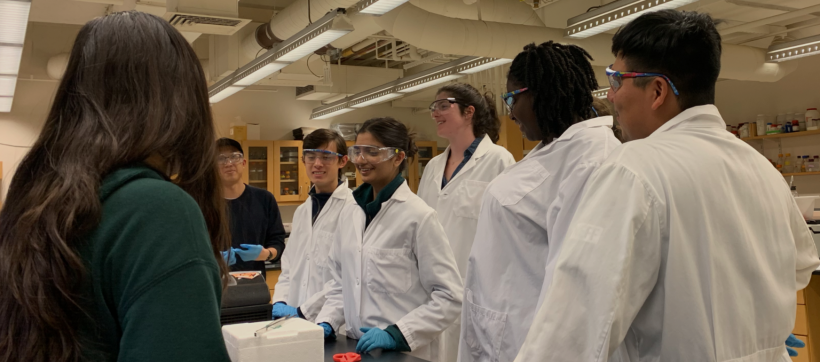Difference between revisions of "20.109(S20):Examine qPCR results and complete data analysis (Day8)"
Noreen Lyell (Talk | contribs) (→Introduction) |
Noreen Lyell (Talk | contribs) (→Introduction) |
||
| Line 7: | Line 7: | ||
Throughout Module 2 you have used two datasets to study the effect of etoposide treatment on cancer cell lines (DLD-1 and A549). In the previous exercises you examined gene expression in each cell line. Today you will use the skills learned to compare gene expression across DLD-1 and A549. | Throughout Module 2 you have used two datasets to study the effect of etoposide treatment on cancer cell lines (DLD-1 and A549). In the previous exercises you examined gene expression in each cell line. Today you will use the skills learned to compare gene expression across DLD-1 and A549. | ||
| − | As an introduction to how you will discuss and interpret the data in your Research article, let's work though the below | + | As an introduction to how you will discuss and interpret the data in your Research article, let's work though the below figure: |
[[Image:Sp20 M2D8 GO heatmap.png| thumb| center| 650px| Heatmap comparing the Fisher's statistic of the top 100 significantly enriched GO terms across the DLD-1 and A549 datasets.]] | [[Image:Sp20 M2D8 GO heatmap.png| thumb| center| 650px| Heatmap comparing the Fisher's statistic of the top 100 significantly enriched GO terms across the DLD-1 and A549 datasets.]] | ||
| + | |||
| + | In this figure, the DLD-1 (left column) and A549 (right column) datasets were compared and the top 100 GO terms that contained significantly enriched terms were identified. This is different from the figures you generated in the previous exercises as these data are not specific to up or down-regulated genes, rather the overall change across the genes within the GO term was considered. Now that we understand the scope of the data, let's look closer at the specific information provided in the figure. | ||
==Protocols== | ==Protocols== | ||
Revision as of 14:18, 26 March 2020
Introduction
Throughout Module 2 you have used two datasets to study the effect of etoposide treatment on cancer cell lines (DLD-1 and A549). In the previous exercises you examined gene expression in each cell line. Today you will use the skills learned to compare gene expression across DLD-1 and A549.
As an introduction to how you will discuss and interpret the data in your Research article, let's work though the below figure:
In this figure, the DLD-1 (left column) and A549 (right column) datasets were compared and the top 100 GO terms that contained significantly enriched terms were identified. This is different from the figures you generated in the previous exercises as these data are not specific to up or down-regulated genes, rather the overall change across the genes within the GO term was considered. Now that we understand the scope of the data, let's look closer at the specific information provided in the figure.
Protocols
Part 1: Analyze RNA-seq data
Today you will complete your analysis of the RNA-seq data sets!
Complete Exercise #4 developed by Amanda Kedaigle, Anne Shen & Prof. Ernest Fraenkel. In this exercise, compare the RNA-seq results for DLD-1 and A549 to identify similarities and / or differences in gene expression that exist when cells are treated with etoposide.
Next day: Enrich candidate clones using fluorescence-activated cell sorter (FACS)

